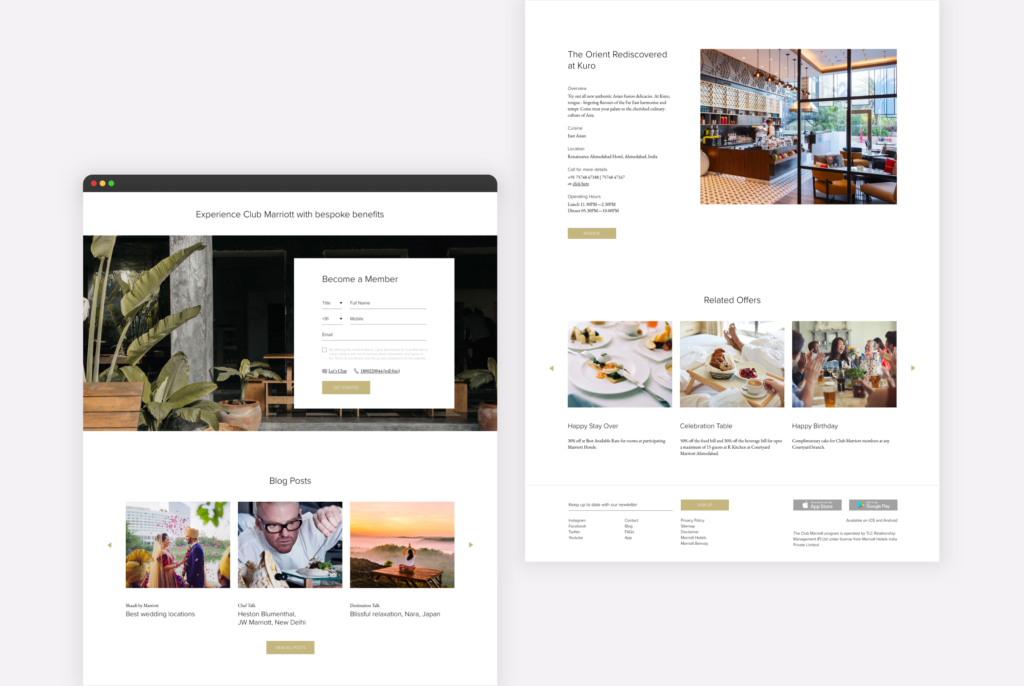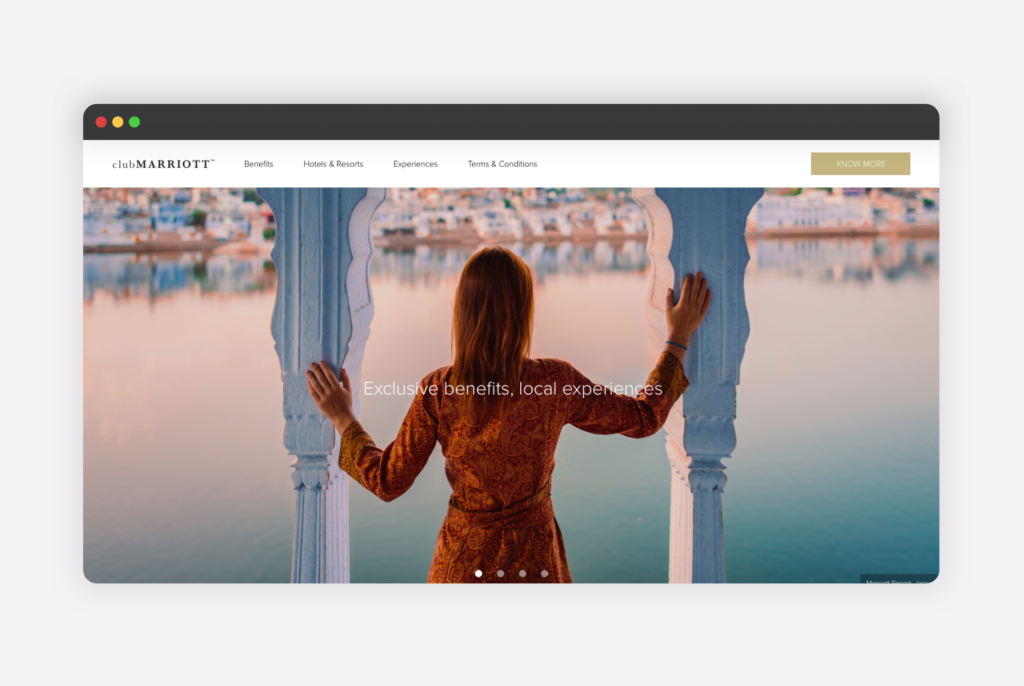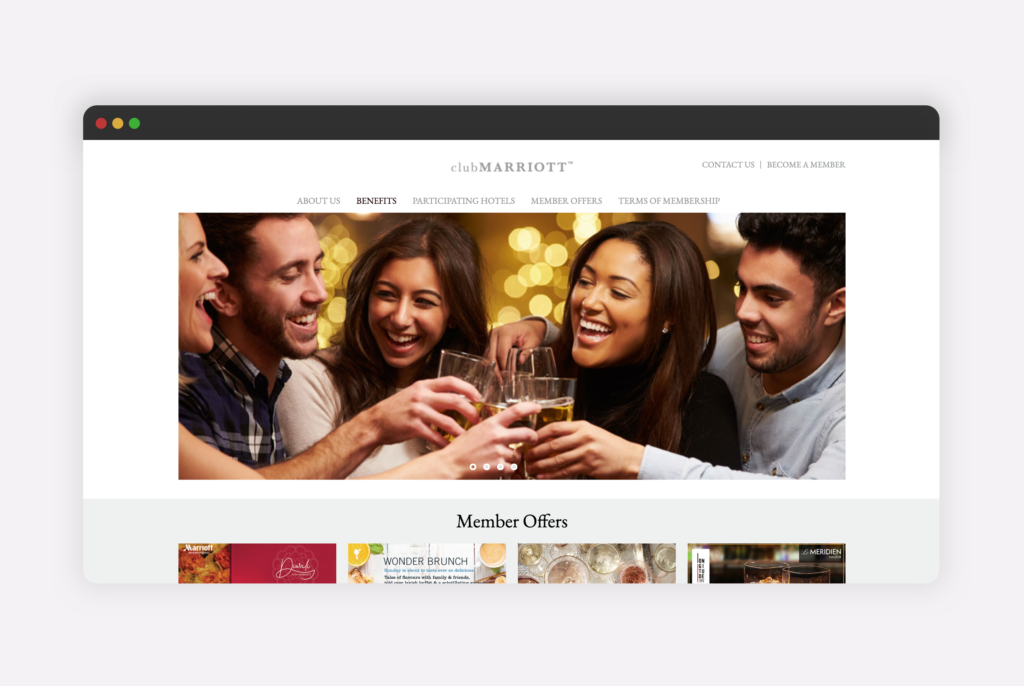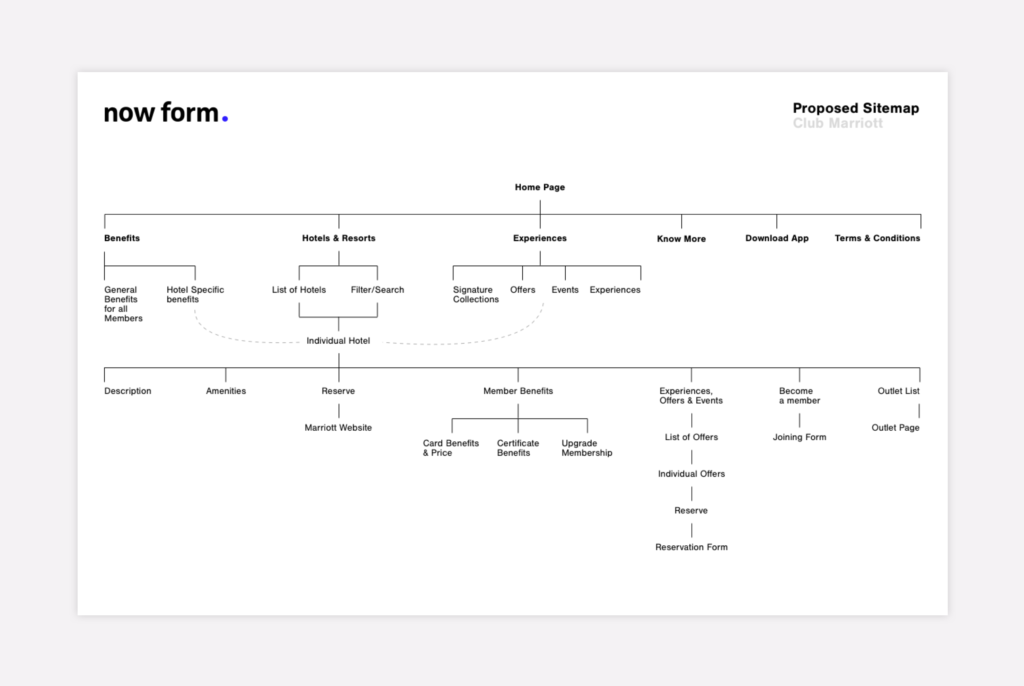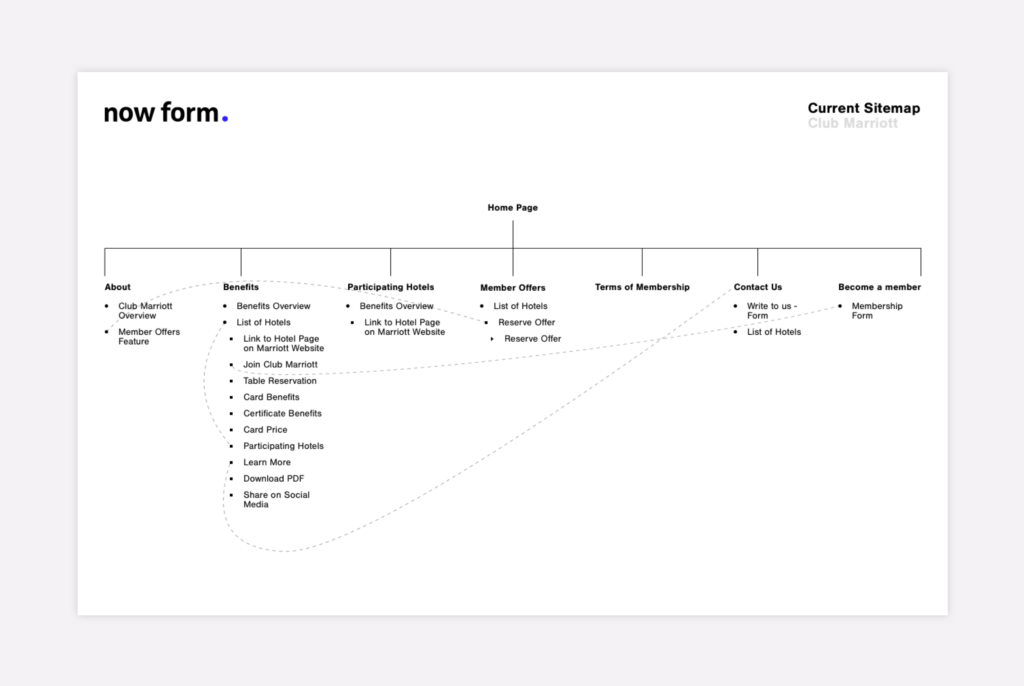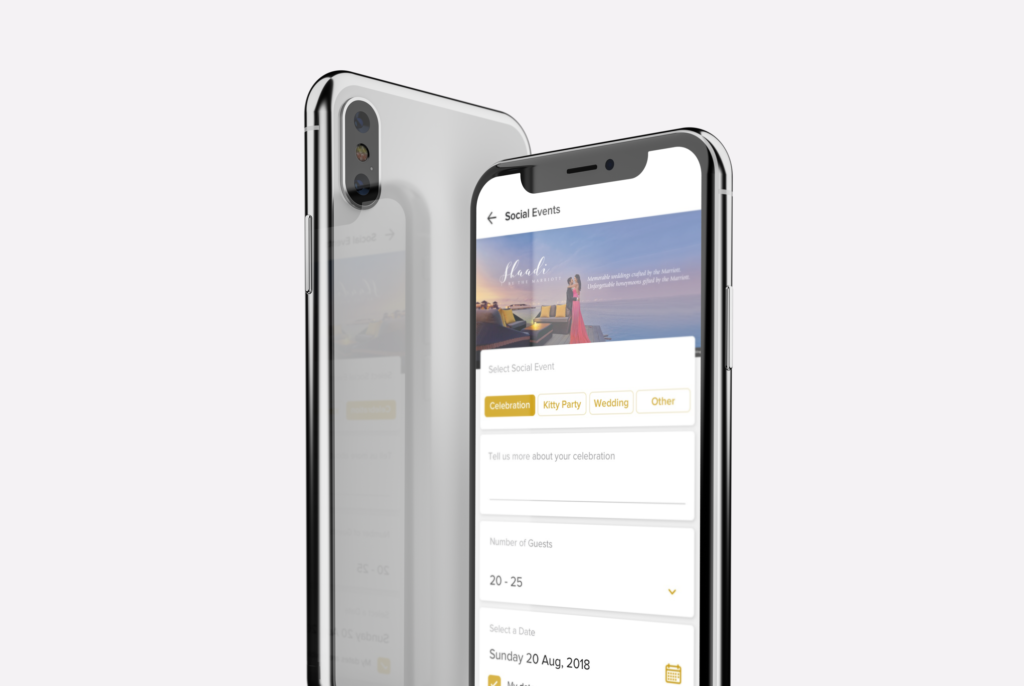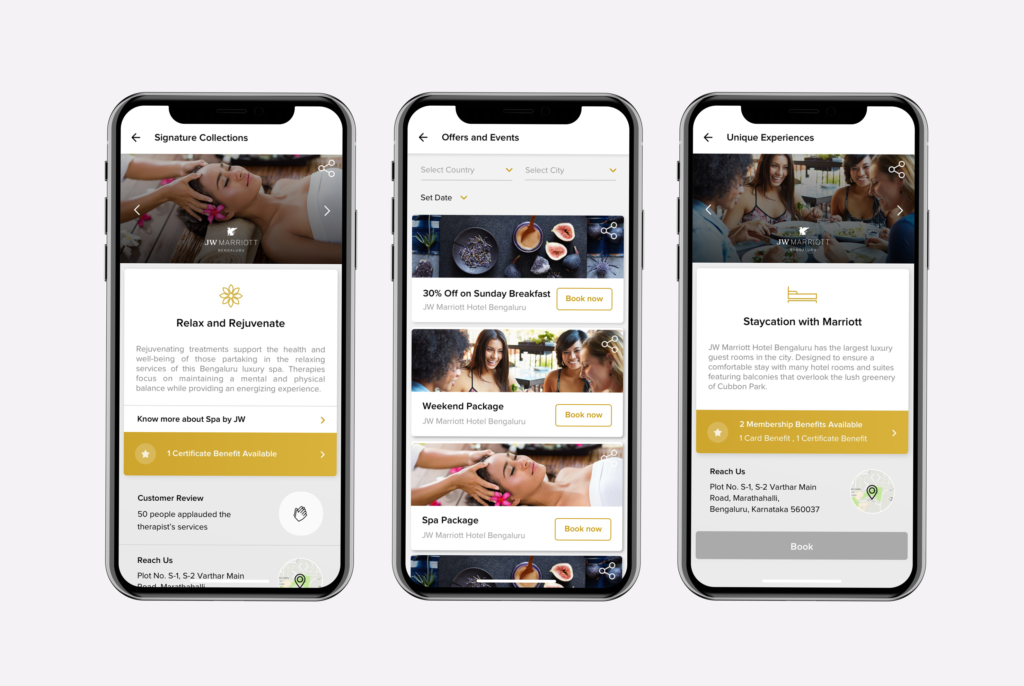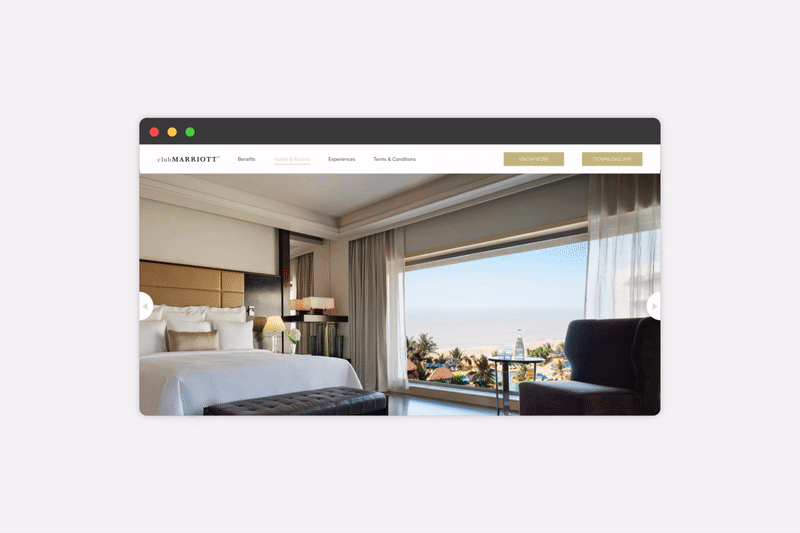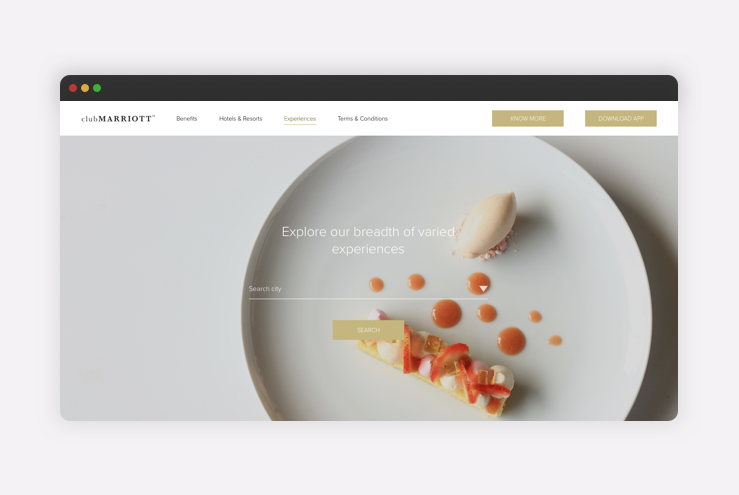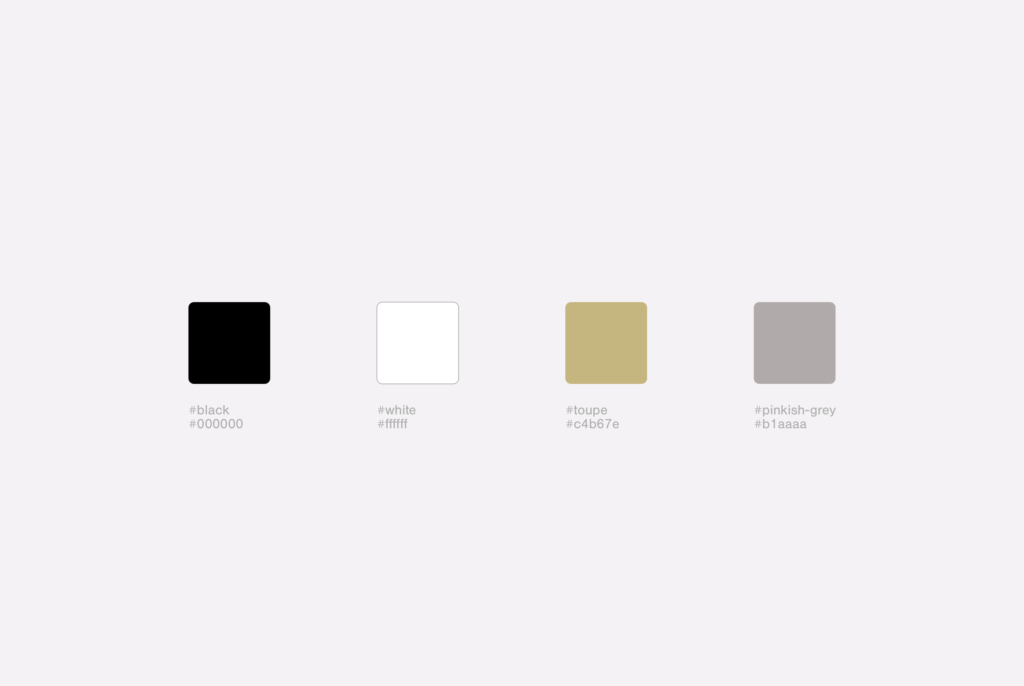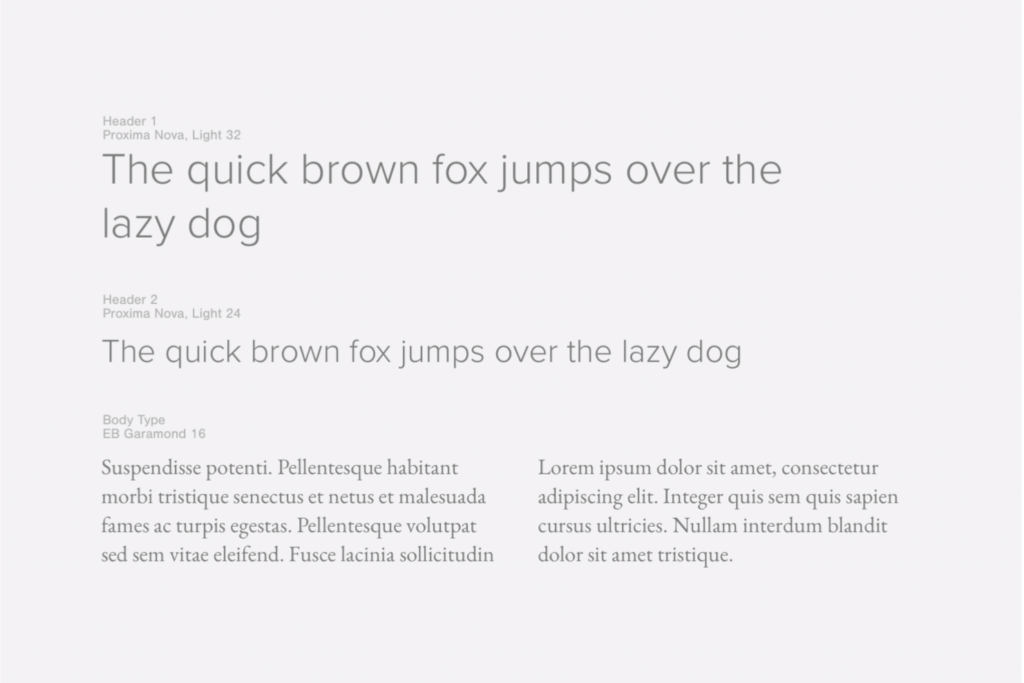Research Insights
We created a research document for the Marriott marketing team. The report consisted of ways for them to leverage industry-agnostic technology innovations (such as chatbots and augmented reality). It also covered an overview of hospitality trends as a way to improve Marriott’s digital assets.
“By changing the technology and introducing social workflows, they (Marriott) could make their assets more dynamic, improving user engagement.”
Through our research, we learnt that the underlying tech framework used by Marriott made it difficult for their hotels to upload and personalise content, resulting in a static website. By changing the technology and introducing social workflows, they could make their assets more dynamic, improving user engagement. Crowdsourcing interventions and marketplaces could bring traffic to the website and enhance brand loyalty.
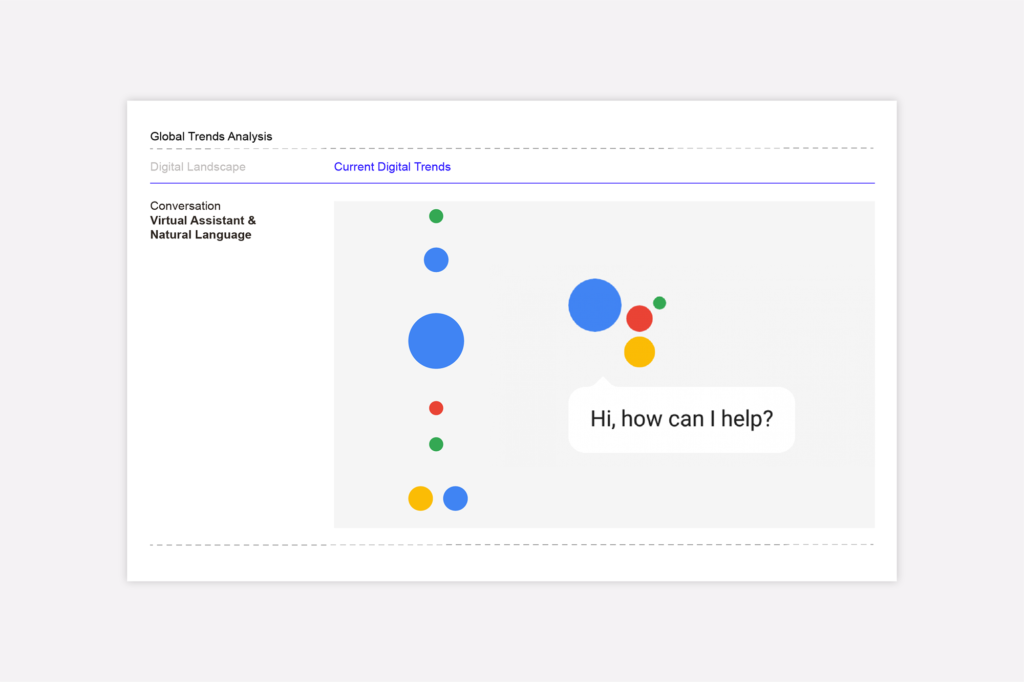
Club Marriott x HDFC Microsite Website Link
As an introduction to Club Marriott, we worked on a microsite for their partnership with HDFC. The website was designed to promote exclusive privileges at over 300 participating hotels and resorts across Asia-Pacific for HDFC Infinia credit-card holders.
The website follows a clean layout, favouring content hierarchy. The use of line drawings acts as visual guides for the content. The drawer animation highlights the form to users and encourages them to avail the offer.
The microsite helped us understand Marriott’s visual language and tone of voice. Through this, we were able to create a design language that we applied to subsequent websites.
This is a Video Caption
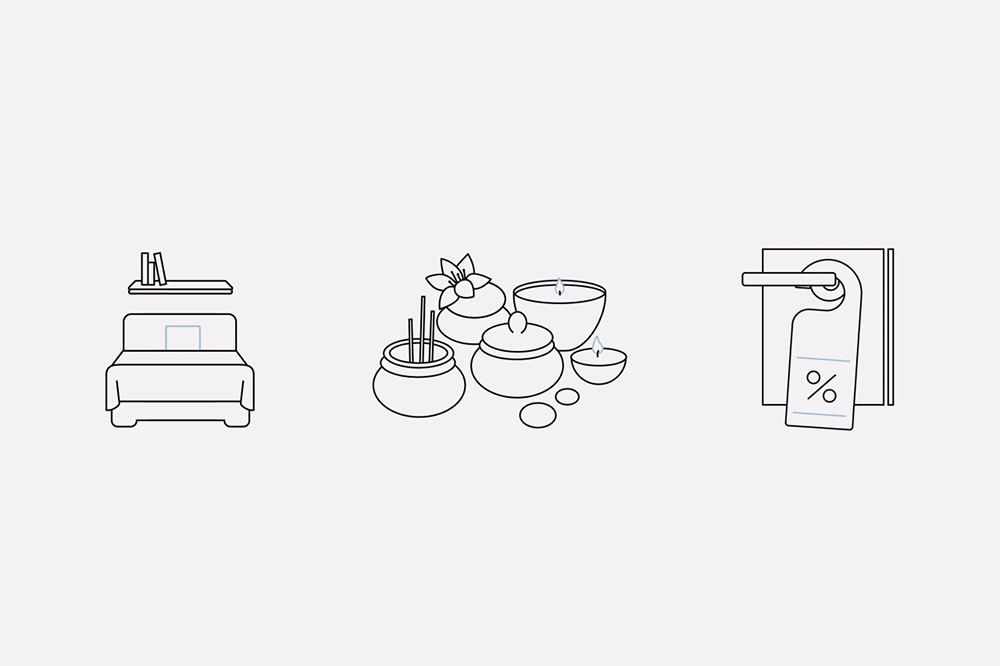
Club Marriott Website, Asia-Pacific
The existing Club Marriott website was dated and lacked a logical content structure. Moreover, it was difficult for participating hotels to update and manage.
The new website built on Adobe Experience Manager allows easier content management. Using AI and analytics tools, the website reorganises itself to create personalised user experiences.
The website and mobile application were designed keeping this dynamic structure in mind. By using repeating visual systems, information can be easily shown, hidden or reordered based on visitor behaviour. By creating smarter content, we can assess user intent, thereby improving customer experience and sales.
“By using repeating visual systems, we can easily reorder, show, and hide information based on visitors behaviour. By creating smarter content, we can assess user intent, thereby improving customer experience and sales.”
The mobile application and website share a single content structure. Keeping the structure in mind, we designed layout variations for the app, making it more dynamic.
We also designed and tested the website to be accessible for people with visual impairments. Learn more about accessibility guidelines here.
The new website is visually pared back, allowing the content to take centre stage. By keeping the layout neutral, we were able to make it aesthetically relevant for the spectrum of Marriott brands. By segmenting the ClubMarriott website into benefits, offers and properties, we made the program simple to understand and easy to navigate.
The property page demonstrates the flexibility of the website. Accordions make it easy to add or remove sections, without compromising on usability. This dynamic structure also gives Marriott numerous cross-selling opportunities.
The project involved various stakeholders from business, marketing, content, and implementation. We created style guides for the assets to avoid design breakdowns across the multiple teams.
